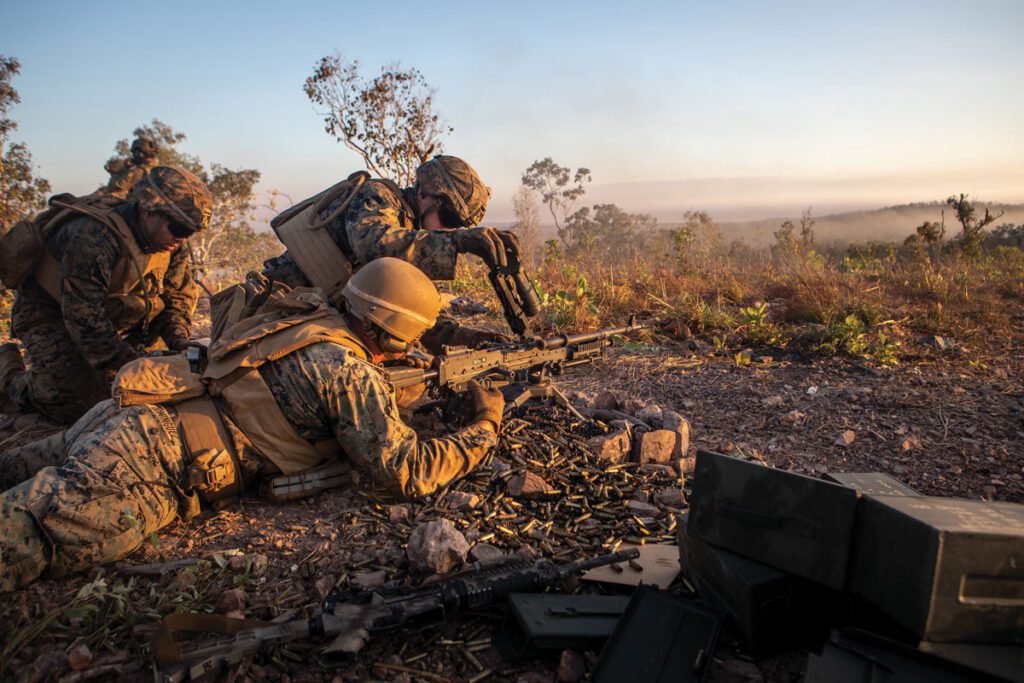Asymmetric warfare is a type of warfare in which opposing forces have significantly different levels of power, capability, or resources. The weaker side often adopts unconventional tactics to overcome the superiority of its adversary. This article explores the definition of asymmetric warfare, types of tactics used, and provides successful examples throughout history. It discusses guerrilla warfare, insurgency, cyber warfare, and the use of asymmetric weapons. The Vietnam War, Afghanistan War, and Israeli-Palestinian Conflict are highlighted as examples where smaller forces successfully employed asymmetric tactics against larger opponents. While asymmetric warfare does not guarantee victory, it has proven to be a viable option for leveling the playing field.
Asymmetric Warfare
Introduction
Asymmetric warfare is a type of warfare in which opposing forces have significantly different levels of power, capability, or resources. In such a scenario, the weaker or less well-equipped side often adopts unconventional tactics to overcome the superiority of its adversary. By utilizing clever and innovative strategies, asymmetric warfare enables the smaller force to level the playing field and increase its chances of success.
Defining Asymmetric Warfare
Asymmetric warfare refers to engagements where one side possesses overwhelming military power, while the other side has limited resources or conventional capabilities. This disparity in strength necessitates the weaker side to employ tactics that exploit the vulnerabilities and weaknesses of the stronger force. It involves using unconventional strategies, non-traditional weapons, and unconventional combat methods to offset the advantage of better-equipped and larger opposing forces.
Types of Asymmetric Warfare Tactics
There are various tactics that can be utilized in asymmetric warfare:
Guerrilla Warfare
Guerrilla warfare is a tactic commonly used in asymmetric warfare, where smaller groups or individuals employ hit-and-run tactics, ambushes, and surprise attacks against the larger force. By avoiding direct confrontation, guerrilla fighters create a climate of fear and uncertainty among the superior forces.
Insurgency
Insurgency involves an organized movement by a smaller force against a ruling government or occupying force. Insurgents employ a wide range of tactics, including sabotage, bombings, assassinations, and propaganda to weaken and demoralize the superior force. Insurgencies often rely on societal grievances to gather support from the local population against the more powerful opponent.
Cyber Warfare
In the modern digital age, cyber warfare has become a significant component of asymmetric warfare. By utilizing technological vulnerabilities, smaller forces can launch cyber attacks on larger, technologically advanced adversaries. These attacks can disrupt essential infrastructure, compromise sensitive information, and cause chaos, leveling the playing field for the weaker force.
Asymmetric Weapons
Utilizing unconventional weapons is another tactic employed in asymmetric warfare. This may include improvised explosive devices (IEDs), suicide bombings, or other improvised and easily accessible weapons. These weapons can inflict significant damage on superior forces, without requiring extensive resources or sophisticated weaponry.
Successful Examples of Asymmetric Warfare
Throughout history, there have been instances where smaller forces have successfully employed asymmetric tactics against superior adversaries. Some notable examples include:
Vietnam War
The Viet Cong and North Vietnamese Army effectively employed guerrilla warfare and insurgency tactics against the technologically superior United States-led forces. Their ability to blend in with the local population, use complex tunnel systems, and exploit jungle terrain allowed them to achieve significant strategic and operational successes.
Afghanistan War
In the Afghan conflict, the Taliban insurgency used asymmetric tactics to counter the superior firepower of the NATO-led coalition forces. They employed suicide bombings, improvised explosive devices, and took advantage of the rugged terrain and local support to successfully resist the occupation.
Israeli-Palestinian Conflict
The Palestinian resistance against Israeli occupation, particularly in the Gaza Strip, has relied heavily on asymmetric tactics. Through the use of underground tunnels, rocket attacks, and urban warfare, Palestinian militant groups have consistently challenged the Israeli military, deflecting their technological and numerical superiority.
Conclusion
Asymmetric warfare provides a means for weaker forces to challenge and overcome superior adversaries by using unconventional tactics and strategies. Whether it is through guerrilla warfare, insurgency, cyber attacks, or unconventional weapons, clever and innovative approaches can help level the playing field. While asymmetric warfare may not guarantee victory for the smaller force, it has proven to be a viable option throughout history, demonstrating the potential to overcome seemingly insurmountable odds.
